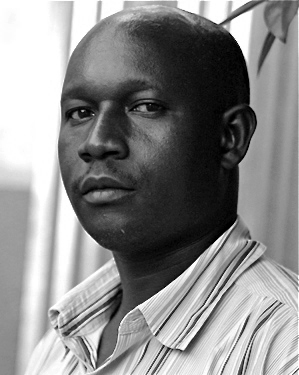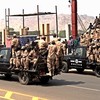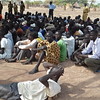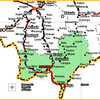Reliance on food aid hinders agriculture, local experts warn
Development experts warn that some communities in South Sudan have become too dependent on external help.
South Sudanese rural households rely on markets for the supply of staple food including sorghum, maize and pulses, rather than producing their own food, according to a recent food security assessment report by the Famine Early Warning Systems Network.
According to 2012 estimates from the UN’s Food and Agriculture Organisation (FAO) South Sudanese produced between 700,000 and 800,000 metric tonnes of food of the five million metric tonnes required per year.According to 2012 estimates from the UN’s Food and Agriculture Organisation (FAO) South Sudanese produced between 700,000 and 800,000 metric tonnes of food. Though this was an important contribution to the country’s food requirements, estimated to be more than 5 million metric tonnes per year, it is not enough.
But when South Sudanese harvest in the next few weeks, the crops are estimated to be scarce, as violence has driven many from their land. Nearly four million South Sudanese face emergency levels of food insecurity in August, according to the United Nations and the outlook for food provision will be even worse for 2015, according to Chris Hillbruner of the USAID-funded Famine Early Warning Systems Network.
We are expecting a green harvest in the next two to four weeks and then the main harvest in October. Those harvests are able to provide some short term relief but we think that overall, those harvests are going to be below average,” says Hillbruner.
We are very concerned that 2015 could be worse than this year.”If the conflict and the markets issues and the constraints on humanitarian access aren’t resolved, we are very concerned that 2015 could be worse than this year,” Hillbruner added.
The looming famine is being attributed to the ongoing insecurity, which has displaced people from their homes, and to a lack of access to markets either due to a poor road network or insecurity. But experts argue that communities failed as well, showing too little initiative to produce their own food, a trend which has worsened the food shortages across the country.
Before the war, there were communities that had their own coping mechanism during times of food shortage, because there was no food aid. They did everything they could to see that they had food but this is no longer the case,” says Isaac Woja Enock, a food security and natural resources development consultant with the Dutch Development Agency, SNV.
Food aid does not provide all the required food nutrients that people need.”Nearly 300,000 children are malnourished in South Sudan, according to the UN children’s agency, UNICEF. The malnourished children are mostly found in communities that currently rely on food aid in parts of Upper Nile, Unity and Jonglei states, which are the areas hardest hit by the conflict.
Children look emaciated, sickly and older due to malnutrition. This is because food aid does not provide all the required food nutrients that people need,” Woja says.
Experts say reliance on food aid will perpetuate malnutrition and food shortages unless communities, especially those in relatively peaceful parts of the country, take the initiative to produce their own food.
They are not food secure because they receive grain and cooking oil. This is only intended to keep people living, to keep people alive but not to keep you healthy,” Woja adds.
Given the country’s fertile soils, abundant rainfall and mass arable land, South Sudan has the potential to grow food for its citizens, says James Lupai, an agriculture extension worker in Central Equatoria State.
It’s just a matter of political will. If the government takes the initiative to see that there is no food aid and there is emphasis on agriculture rather than free food, people will use their coping mechanisms during lean seasons,” explains Woja.
Communities that keep livestock should be sensitised that it is okay for them to sell their animals.”Food aid should only be provided to close short food gaps when crops have been destroyed by floods or drought but it should not be something to rely on every year, he says.
He admitted that it was impossible to farm the conflict affected areas, but insisted that once the conflict is resolved, there should be no reason for people to continue to rely on food aid.
Both Woja and Lupai say there should be a strategy to sensitise communities to understand that food aid is not a right but rather helps people stay alive for a period of time while they get on their feet to produce their own food.
And communities that keep livestock should be sensitised that it is okay for them to sell their animals to buy staple food from the market instead of relying on food aid from aid agencies,” Lupai remarks.




